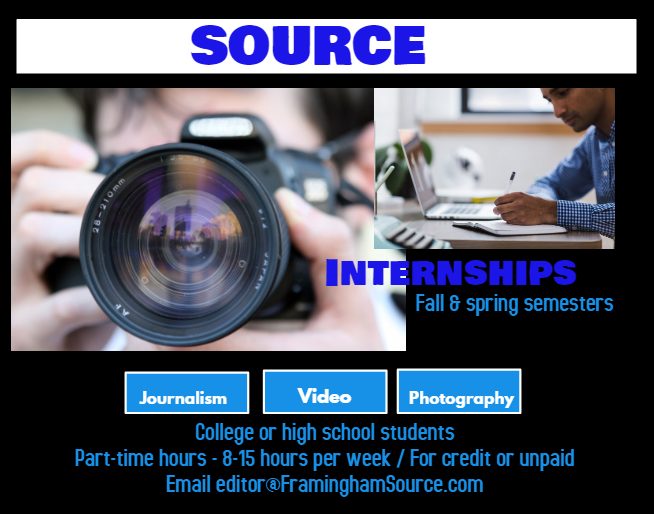By Adam Freudberg
FRAMINGHAM – The Massachusetts plan on reopening schools has been released. First, join me in taking a deep breath (or many!) because this is not easy. Thinking about our own kids, our neighbors, and our entire state of students learning this way, and teachers teaching this way is a challenge and brings about so many thoughts and emotions.
We all share the same values to ensure that everyone no matter what age, what grade, or what school they attend or work at be and feel as physically and emotionally safe as possible.
We want students to be with their friends and teachers.
We want them to learn and grow up (but not too fast!) to be college and/or career and life ready.
[broadstreet zone=”51611″]
Together we can best get through the uncertainty and stress by being ready to learn, be respectful and patient as this all proceeds, and be understanding of the many realities of living and adapting during a pandemic.
What follows below is a summary I put together of the plan’s top points, my view on the gaps where more is needed/expected, and what specifically the Framingham Public Schools have been doing to prepare for this plan.
I encourage everyone interested to read the full plan. And click here for today’s message from FPS on what is next locally.
The MA Department of Elementary and Secondary Education (DESE) has released the Initial Fall School Reopening Guide. This is all based on current public health data reflecting positive trends in Massachusetts at this moment in time. If numbers get worse, this guide will change.
[broadstreet zone=”53230″]
Bottom Line Up Front – DESE (together with infectious disease physicians, pediatricians, and other public health experts) have determined that schools can reopen this fall; districts must create three separate plans: 1. All students return five days per/week with new public health measures; 2. Hybrid school model with a combination of in-person and remote learning; and 3. 100% Remote Learning. All plans must be submitted and reviewed by DESE before schools can open; families will be offered the option to send their kids to school or choose a remote learning model instead (more to come here); all staff and all students 2nd grade and up must wear masks (with some exceptions); six feet physical distance is preferred, yet as low as three feet is ok with other provisions in place, and there are no caps on class size as long as physical distancing occurs; students will likely eat breakfast and lunch in their classrooms; flu and other standard vaccines are incredibly top priorities; screening, temperature checks upon school arrival, and COVID testing are not required; and districts should assume level funding support plus new grants from the state to help with major new expected costs. DESE notes they do need more time to provide rules and guidance on other aspects such as busing, athletics, extracurriculars, what to do when a positive test occurs, and more.
The DESE document is titled initial guidance because it is clearly stated that the situation will change, guidance will change based on public health data, and there are numerous topics not yet covered as DESE needs more time.
[broadstreet zone=”53820″]
Top Points Summarized and/or Directly Quoted from the DESE Report (not my opinions):
- Plan Development: To craft this plan, DESE worked with and utilized a cross section of educators, medical professionals, and medical research (including data and strategies from other countries who have already reopened schools) that have been effective in reducing the risk of infection and transmission.
- In Person Learning Preferred: Their top focus is to get all students back in school at the same time. The report was clear that there is no substitute for in-person instruction when it comes to the quality of students’ academic learning.
- High-needs Students Should be Prioritized: High-needs students should be prioritized for full-time in-person learning when feasible. That is, even if most students are not in school each day, schools should consider setting up small programs that would run daily for one or more cohorts of high-needs students, including students with disabilities and English learners who are most in need of in-person services.
- Recent Events Make a Return More Critical: In light of recent events and a national movement to fight for racial justice, it is even more critical that our students are able to quickly return to robust learning opportunities and a supportive school environment, through which we can engage in meaningful discussions on anti-racism, provide mental health supports, and help to prepare our young people to bring about the changes our world desperately needs.
[broadstreet zone=”58610″]
- Health & Safety Measures: Creating culture of health and safety, and vigorous reinforcement of all of the following measures are proven to reduce the risk of transmission: rigorous hygiene and handwashing, use of masks/face coverings, physical distancing, reducing interaction between groups, staying home when sick, protecting those most vulnerable to the disease, and expanding testing and tracing capabilities.
- Masks: Students in grade 2 and above are required to wear a mask/face covering that covers their nose and mouth. Students in kindergarten and grade 1 should be encouraged to wear a mask/face covering. Face shields may be an option for those students with medical, behavioral, or other challenges who are unable to wear masks/face coverings. Transparent masks may be the best option for both teachers and students in classes for deaf and hard of hearing students. They may also be useful for teachers and younger students who rely on visual / facial cues. Adults, including educators and staff, are required to wear masks/face coverings. Exceptions to mask/face covering requirements must be made for those for whom it is not possible due to medical conditions, disability impact, or other health or safety factors. Mask breaks should occur throughout the day. Breaks should occur when students can be six feet apart and ideally outside or at least with the windows open. Masks/face coverings are required to be worn by everyone on the bus during school bus transportation.
- Screenings: Screening, temperature checks upon school arrival, and COVID testing are not required.
- Isolation Spaces: Schools are required to designate a COVID-19 related isolation space that is separate from the nurse’s office or other space where routine medical care is provided.
- Vaccines: Flu vaccines and all standard vaccinations are important. Flu shots must be encouraged to enhance flu vaccination coverage in Massachusetts, particularly among school aged children.
- Role of Families Supporting Public Health: The role of families is incredibly important. Families can also contribute by supporting the use of masks in school and on the bus, arranging alternate transportation whenever possible, communicating with teachers, school leaders and local authorities, and continuing to follow state guidance on health and safety outside of school.
- Options for Students: Families will be offered the option to send their kids to school, or choose a remote learning model instead. DESE said more will be forthcoming here.
- Funding: For planning purposes, districts and schools should assume a “level service plus” budget in order to bring students back in person; in other words, additional funds on top of their projected budgets to manage additional costs associated with health and safety preparations. We also recognize that “level service plus” must include additional resources targeted to our historically under-resourced communities. While schools and districts, through the city or town in which they are located, have already received federal CARES Act funds to support COVID-19 related purchases such as health and safety supplies/PPE, technology, and facilities upgrades, the Commonwealth is making additional funding sources available directly to schools and districts to support reopening.
- COVID-19 Transmission and Health Impacts on Children: At this time, the evidence suggests schools have not played a significant role in COVID-19 transmission and that children, particularly younger children, are less likely than adults to be infected with COVID-19. Furthermore, if they become infected, it appears children may be less likely to transmit COVID-19 to others. The report provides many sources/citations on this statement and has sections on each of the following:
- Schools do not appear to have played a major role in COVID-19 transmission; In general, rates of COVID-19 infection are lower for children than for adults; If exposed, children may be less likely to become infected with COVID-19; If infected, it appears children may be less likely to infect others with COVID-19.
[broadstreet zone=”59984″]
- Physical Distancing in Schools: DESE encourages districts and schools to aim for six feet of distance between individuals where feasible. At the same time, a minimum physical distance of three feet has been established when combined with the other measures outlined in this list of safety requirements. They cite the WHO and other countries who have been using no less than three feet separations.
- To minimize the number of students who would potentially be exposed in the event of a COVID-19 event, to the extent feasible, elementary schools should aim to keep students in the same group throughout the day and middle and high schools are encouraged to minimize mixing student groups to the extent feasible. They offer some advice on the use of cohorts, using other spaces in schools and the community (including outdoors) strategically, and capacity issues.
- Frequent Communications: Family surveys, staff professional development, and regular communications by Districts are encouraged.

Gaps
The gaps I see in this report where more specifics and attention are needed are the following. DESE in some cases acknowledged they would provide more information in the coming weeks:
My Identified Gaps:
- Educators: Very little on educators, their needs, contractual obligations, workload managing in person and remote students at the same time, their own family obligations, etc.
- Family Options: Nothing on the ramifications of parent/guardian decisions. What if a family chooses to keep their kids home for remote learning or home schooling? What grade or class would they be in when they wish to return? Whatever the state’s answer is, the local answer must be to support stability for each and every student during and after this pandemic ends.
- Busing: Transportation information is promised later, yet requires as much lead time as possible to plan routes, budget, staffing, childcare.
- Special Education: this is a top inquiety of the past few months and requires a whole lot more than the statement “High-needs students should be prioritized for full-time in-person learning when feasible” and more will follow.
- Recess/Outdoor Learning Guidance: kids need time to reintegrate, learn the new rules, and have fun. The state should approve waivers on current measures to at least allow for the doubling, if not tripling or quadrupling the amount of time districts can offer elementary school recess, gym, arts, music, and social-emotional behavioral health.
- MCAS: This is not a year to require MCAS testing. Will the state again seek a federal waiver? The tens of millions saved from statewide test administration can be poured into schools.
- Calendar: The school year calendar previously required 180 days of learning. What kind of flexibility will be offered? The first day school can begin has not been set by the state yet.
- COVID Testing: school districts aren’t in the business of finding test providers. This must be coordinated by the state, departments of public health, and others to offer schools direct, easy processes to get tested and communicate results back to schools. This includes balancing patient privacy with clear facts for the community on student/staff exposure, risk, what to do, and how to support contact tracing.

Gaps Listed by DESE:
They said they are working on new documents to cover the following:
- Process for handling a COVID-19 positive case in the school community, including when a school or classroom would need to shut down.
- Remote learning resources.
- Facilities and operations, including entry and exit procedures, cleaning and ventilation, procurement, food distribution, and signage.
- Transportation, including bus scheduling options, addressing bus capacity, and alternative modes of transportation, and operational considerations.
- Guidance for special programs and student supports, including special education,
- English learner education, and other programs and supports.
- Athletics, extracurriculars, and electives.
- Key policies, including academic calendar considerations.

What does this mean for Framingham?
Back to School Task Force Launched and Ready – In May Superintendent Dr. Tremblay put together a task force to scenario plan and be ready for this moment when new guidance from DESE was released.
This group serves as an advisory committee with a range of experiences and roles, representative of the district as a whole, to provide input to the Superintendent and District leadership regarding the elements of a comprehensive back-to-school plan.
The task force previously focused on the areas of Physical Operations, School Safety Operations, The Whole Child, School Personnel, Academics, and Communication. FPS leaders have an all day planning session scheduled tomorrow to reconcile DESE’s plan with the draft FPS Back to School Plan.
Communication is Critical and Will Happen – The Superintendent will hold a webinar soon, speak about the DESE plan at the Wednesday July 1, July 15, August 5, and August 19 School Committee meetings, add a FAQ section on reopening to the FPS website, and clearly communicate where Framingham is in their planning stages often throughout the summer.
Community Feedback is Welcomed and Essential – Feel free to contact me, the Superintendent, and/or entire School Committee with your views, questions, concerns, and ideas at any time. Email address can be found here: https://www.framingham.k12.ma.us/schoolcommittee
[broadstreet zone=”59946″]

